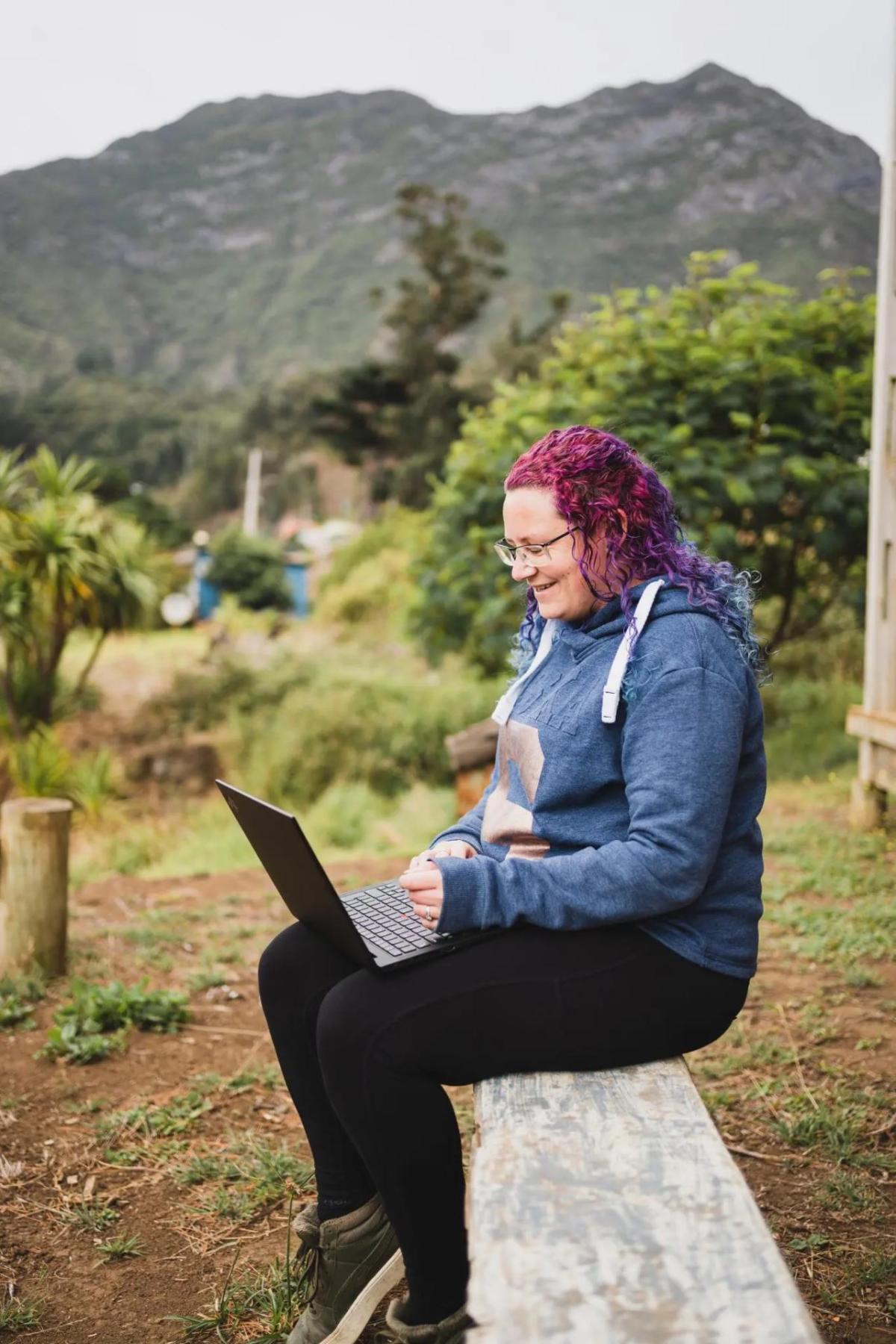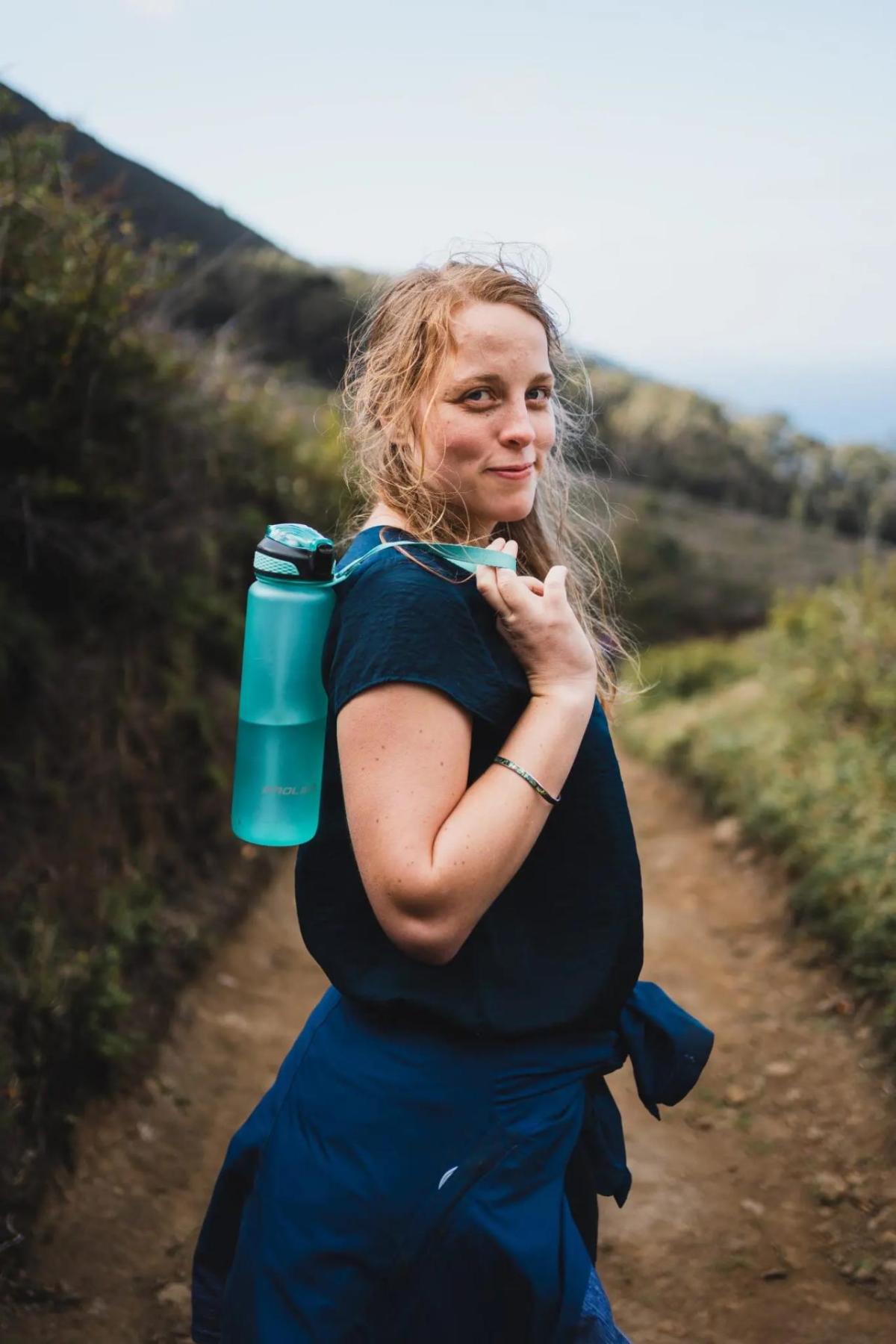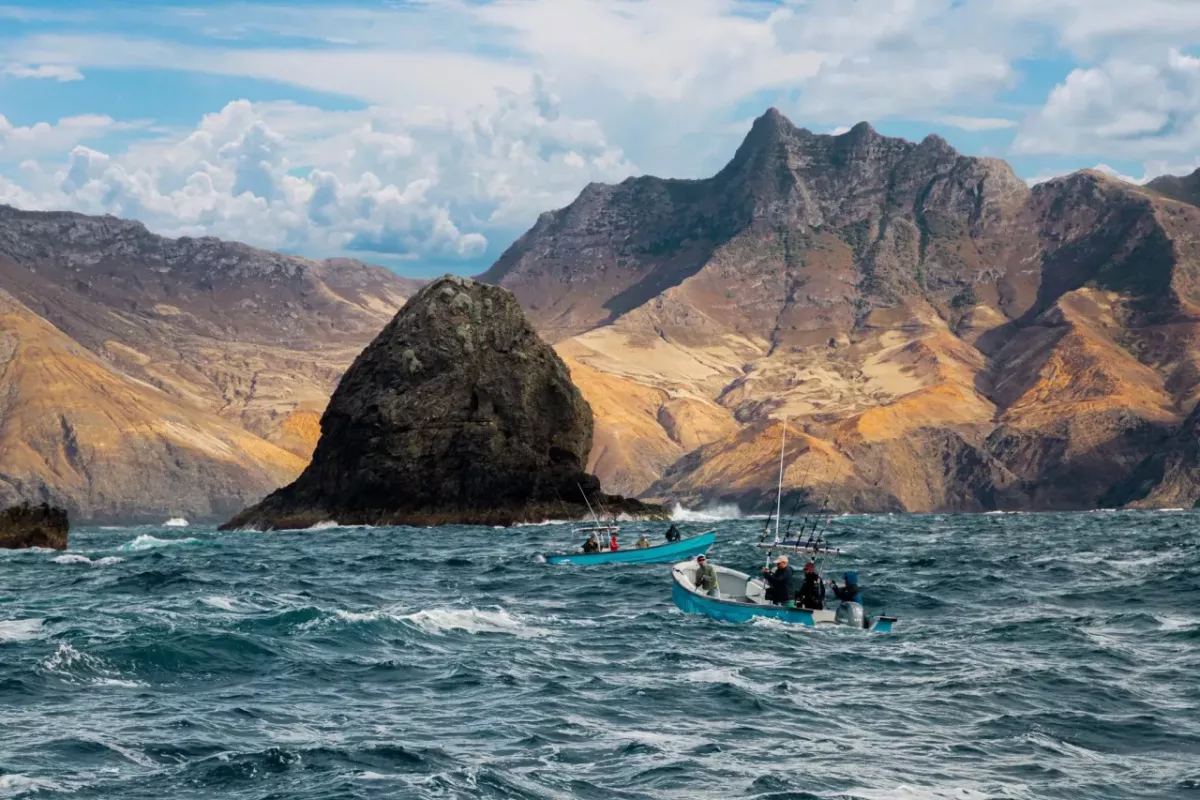Changed for Good: Work For Humankind One Year On
Lenovo’s flagship campaign Work For Humankind (WFH) took working remotely to the extreme.
Sixteen volunteers were sent to one of the most remote offices in the world on Robinson Crusoe Island, nearly 700km off the eastern coast of Chile. There they volunteered in their free time and harnessed the power of cutting-edge Lenovo technology to boost the island’s self-sufficiency, helped to transform the island’s conservation efforts and the perception of hybrid working for years to come.
But what about the impact on the volunteers who were so crucial to the project’s success?
We sat down with two of the incredible volunteers from EMEA – Cynthia Mayer, an engineer and artist from France, and Kay Bromley, a technology expert from the UK – for six quickfire questions on how Work For Humankind has changed their lives.
What initially drew you to apply for Work for Humankind?
Cynthia: Work For Humankind instantly reminded me of an experience I had during the pandemic when I moved to Hawaii. When I lived there, I didn’t just want to be a tourist, so I took up opportunities helping a local non-profit, to give back something meaningful to the community.
Work For Humankind seemed to epitomize this mentality: working remotely, while giving something back to the community you’re in.
Kay: Never in a million years did I think I was going to be selected. I’m a tech expert and I love to travel so when I saw the video advertisement, I went for it. I didn’t even tell my husband or kids as I didn’t want to get their hopes up.
When I got selected my son was so excited as he knew all about Robinson Crusoe, its uniqueness and the endemic species – I think he wishes he could’ve gone instead of me!
Tell us what life was like on the island.
Cynthia: Well, first there was the unexpected weather! Wind, rain, sun – you never knew what you were going to get.
Kay: The island itself is so epic. We did a trek from the airport to the local town, and in that 20km we saw red soil, arid desert-like plains, chalky cliffs, blustering wind and huge waves.
Cynthia: Also, everyone was related to each other – imagine that! A thousand people and they’re all connected in some way. I was amazed at the uniqueness of this community.
Kay: Another thing that struck me was the complete lack of pollution. It’s so pure and untouched that adjusting back to life on my return was one of the most difficult parts.
What is your favourite memory of living and working on Robinson Crusoe Island?
Cynthia: A group of us hiked to camp at the highest point on the island – the Mirador de Selkirk. We travelled with locals and camped on the other side of the peak. Being able to breathe in the area for all its natural beauty was a magical, unforgettable experience.
Kay: Cynthia’s experience really speaks to my favourite thing about the trip – how accepting the islanders were of us. They came with such open arms and open hearts.
What Work For Humankind project are you most proud of?
Kay: I built an app to help the islanders communicate with each other. Before, they used WhatsApp – from sharing boat times to the latest football results – which wasn’t the most effective communication method. So, I created an app that provided a more user-friendly way to input data and send notifications.
I also installed a high-speed Lenovo CPU server which has transformed Island Conservation’s work. This means they’re spending more time out in the field, rather than stuck in the office waiting for things to load!
Cynthia: I’m most proud of the incredible projects that were delivered on the island. From building the greenhouse, research for green energy grants, and veterinary work to the clean water research projects, teaching of technology skills and interventions in school. In a relatively short space of time, the project was able to give back in significant way.
Six months on, how has the experience changed you, and what are the key lessons you have taken from life with the Robinson Crusoe Community?
Cynthia: It’s taught me many lessons about the importance of volunteering and my own passions. It’s important to do both, but also crucial to maintain a healthy balance.
Kay: Absolutely. It’s taught me to take a slower pace in life. Due to its isolated location and bad weather, Work For Humankind taught me to embrace my own time as much as the work itself.
It’s also taught me so much about sustainability. Robinson Crusoe’s natural resources may be limited, but what they have they really look after. Their sustainable fishing practices are a great example of this – we really don’t have to fish the sea empty.
If you could turn back the clock to the beginning of the year, would you do it again?
Cynthia: Yes! I’ve been an engineer my entire life, but I applied for Work For Humankind not as an engineer, but an artist. The opportunity allowed me to use my passion as my primary skill, and I’m very proud of the outcomes this led to. I’ve now quit engineering and run an art gallery – that’s how much it ignited my passion.
Kay: I’d do it again in a heartbeat. I was showing my son the documentary, and he asked: “Are you going again next year!?” As an experience, there’s nothing else that can compare. Working somewhere so remote, the way in which we gave back and the friendships that have endured since, have all changed me for the better.
Work For Humankind was a genuine first, and the experience of these two volunteers is testament to that. The project did what no one previously thought possible: It connected a previously isolated island of 900 people to the world, opening new possibilities for tourism, trade, employment and education. We thank Cynthia, Kay and all the volunteers for their role in making that happen.
You can find out more about Work For Humankind at https://lenovowfh.com/.




